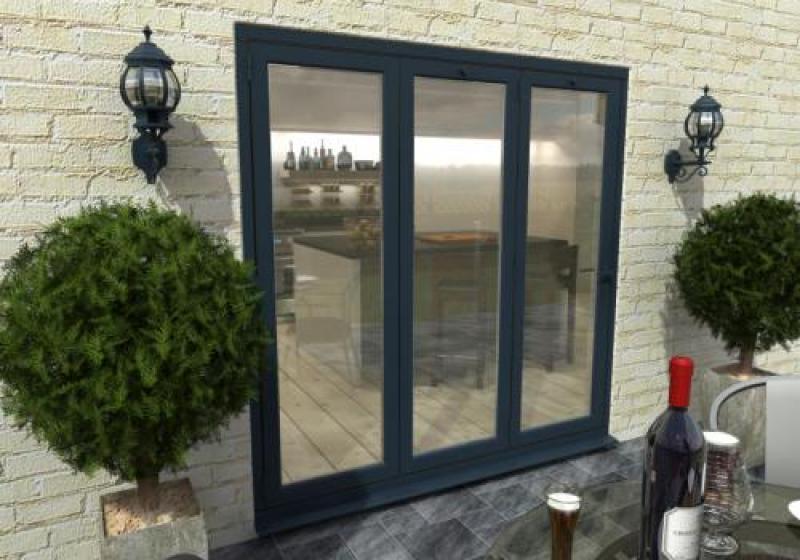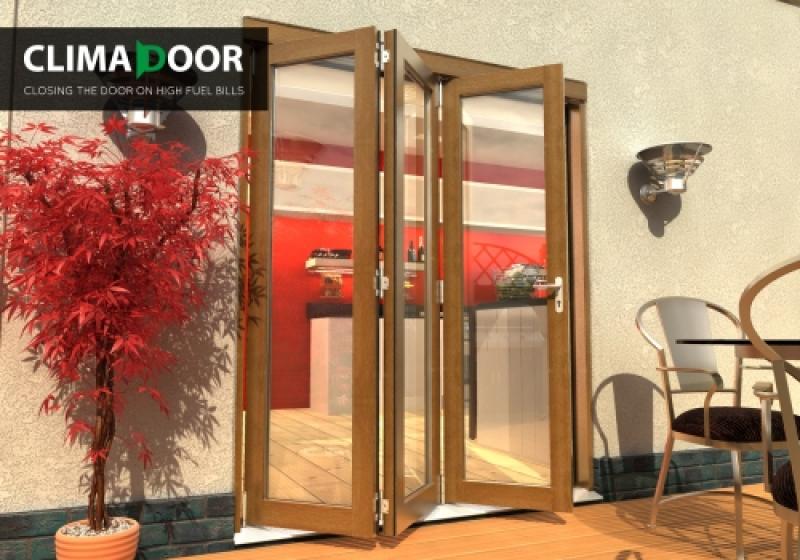
Having made the decision to do with an exterior bifold door system, there are a range of materials
and designs to suit different budgets, dimensions & styles. It can be tricky to choose the right bifold doors for your home, and there are plenty of options available. Our exterior folding patio doors are offered in a choice of solid engineered wood or aluminium, and we're going to help you decide which material is best for you.

Modern processes make Aluminium an extremely appealing material for construction. Exceptionally strong for the weight, stable in all weather conditions and requiring minimal ongoing maintenance with no natural tendency to age, it even forms a protective oxide if a finish is damaged. For doors and windows, however, it has a few disadvantages, not least of which is an excellent conductive property that effectively takes cold from outside and brings it in, and takes heat from inside. Even though the surface area of the frame is small, it makes a significant difference, and technology has provided a solution.
Thermally broken frames are not, as the name implies, broken, though it is technically accurate. The undesirable thermal properties of aluminium are overcome by creating a thermal barrier between
the inner and outer frame. As aluminium can be extruded in complex shapes, this can be designed into the window without additional bulk. Uninsulated aluminium can conduct up to 1,000 times more heat than the thermal barrier, which also has the benefit of creating a sound deadening space. For large bifold doors, this is a particular bonus.
Recent technical innovations have allowed even better performance and longevity from the thermal barrier component. Narrow polyurethane barriers have been replaced with mechanically inserted sections of engineering plastic that share the same expansion rates and density as the aluminium without the thermal conductivity. The new technology creates a much smaller thermal gap and as an integral part of the frame design, does not rely on bonding different materials together. We offer aluminium systems in a choice of colours, and with class-leading thermal performance. Low profile installations and commercial properties benefit from the economical space requirements and secure locking systems on our Climadoor aluminium bifold doors.

In door construction, solid wood generally indicates a solid construction, rather than hollow. In the case of extensively glazed, heavy articulated doors, solid woods would present unacceptable challenges for
most installers and climates, with a tendency to warp and alter size. Although vintage properties used solid pieces, technology has progressed, and engineered wood bifold doors offer all the stability and
accuracy of metal or UPVC material with the appearance and warmth of wood.
Laminates are produced using a blend of hardwood and softwoods to achieve the desired density, strength and stability. Grain is replaced by carefully chosen lateral and diagonal structures to provide the optimum internal support, bonded using high- technology resins and under high pressure with controlled moisture & humidity. Once the core structure is created a solid wood veneer - usually oak - is applied for a perfect, high-quality finish.
Our door packages are available pre-painted in white with a durable high-build finish, or unfinished ready for your own choice of stains or exterior paint colours.
As the loading and stress can be planned out throughout the door construction, the wood can be formed to precisely carry forces without excessive weight, essential for smooth operation and long- lasting support hardware. In addition, engineered wood bifolding doors offer excellent thermal performance and insulation, particularly when combined with the latest solar glazing modules. Our
Climadoor Elite range of solid engineered oak doors offers the best thermal performance, for a highly competitive package price including stainless steel hardware, reversible installation, external
folding to place the opened doors away from interior furnishing and secure locking.
Solid wood doors also offer the advantage of an easily worked surface for mounting internal blinds and hardware without specialist tools.
Traditionally bifold patio doors have used gravity to take the load - bottom hung doors use a lower runner and captive glide system to place the weight of the structure on the ground. This has the disadvantage of being vulnerable to dirt and water ingress and requiring regular maintenance and cleaning. It also has the issue that on simpler systems, the upper guides can detach, causing the door
to bow outwards. To alleviate this modern bifold door systems use captive upper runners that, whilst not load bearing, keep the upper guides securely attached at all times.
For new builds and extensive rebuilds, the top hung system offers many advantages. The gliding system of rollers & bearings is protected from the elements and the lower rail is much simplified, making it less vulnerable overall. Should anything happen to the lower rail, the doors will naturally hang in a balanced position, making them easier to close and secure. The downside of this is that without the correct structural supports, top hung doors cannot safely be installed. Appropriate lintels will be required if not specified during the build process.
Before choosing your door system, get structural checks to ascertain which solution is best for you, and consider the options for top hung, bottom hung and flush or standard guides. Making the right choices for your building as well as your door system plans could save a significant amount of time and money over the course of installation
